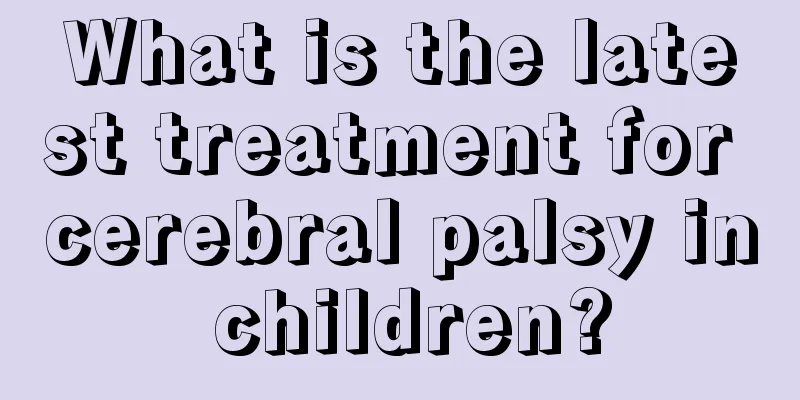What are the effects of hemolysis on children?

|
Because the blood types of the mother and fetus are incompatible, the mother's antibodies enter the fetus's body and destroy red blood cells, causing neonatal hemolytic disease. This type of hemolysis is relatively common, but it can cause great harm to the baby. In addition to causing jaundice and hepatosplenomegaly in the baby, severe cases can affect the baby's nervous system and even endanger his life. Parents should discover and treat the disease in time, otherwise delaying the treatment may leave sequelae. What is neonatal hemolysis? This disease is caused by incompatibility of blood types between mother and baby. If the blood types of the mother and the baby are incompatible, it will cause damage to the red blood cell aggregation of the fetus. Under the premise that the blood types of mother and baby are incompatible, the mother's antibodies will have placenta. Entering into the fetus' body. These antibodies from the mother will target the specific antigens on the baby's red blood cells, thereby destroying the red blood cells and causing hemolytic disease of the newborn. Expectant mothers with type O blood should be wary of hemolytic disease of the newborn. Because type O blood has antigens A and B in its plasma. If the baby's blood type is A, then when antigen A enters the fetus, it will coagulate with antigen A in the baby's red blood cells, causing hemolysis. If the mother's blood type is O type and the fetus's blood type is B type, hemolysis will occur for the same reason. The dangers of neonatal hemolysis In severe cases, neonatal hemolytic disease can cause the baby's death. Some surviving babies will have their intelligence affected after treatment. Severe hemolytic disease of the newborn can cause bilirubin encephalopathy in children, and the cause of death is often respiratory failure or pulmonary hemorrhage. For babies who survive, sequelae will appear after a few months. Hemolytic disease of the newborn can also cause many complications, in addition to the bilirubin encephalopathy mentioned earlier, it also includes sticky bile syndrome, causing neonatal hemolytic anemia, respiratory failure, etc. Neonatal hemolytic disease can also cause symptoms of jaundice in babies, and in severe cases it can also cause hepatosplenomegaly. After the onset of the disease, the baby's nervous system is also easily affected, and a series of symptoms such as drowsiness, refusal to drink milk, and convulsions are likely to occur. If indirect bilirubin enters the brain tissue, it will damage the baby's brain cells. How to treat neonatal hemolysis Hemolytic disease of the newborn can be cured. But the prerequisite is that the disease is discovered early and treated in time, otherwise it is easy to leave sequelae to the baby after treatment. There are many methods for treating hemolytic disease of the newborn. Light therapy is a simple, easy and effective method. Phototherapy can reduce the serum bilirubin in the baby's body. Different plans for light therapy need to be formulated based on the baby's gestational age and age, and whether there are other complications. Babies with high bilirubin should undergo phototherapy in a timely manner to lower serum bilirubin as soon as possible, thus avoiding the development of the disease and causing bilirubin encephalopathy. If phototherapy is ineffective, exchange transfusion may be necessary. Exchange blood therapy is a treatment method only used in particularly serious cases. Hemolytic disease of the newborn can also be treated with drug therapy. Drug therapy is mainly used in the early stages of hemolytic disease of the newborn. Drugs can increase the binding of free bilirubin and reduce the incidence of bilirubin encephalopathy. During treatment, attention should be paid to correcting the baby's anemia, avoiding hypoglycemia and hypocalcemia. The baby's body temperature should be strictly observed, and attention should be paid to avoiding the occurrence of electrolyte disorders. |
<<: How to correct baby's crooked face
>>: What to do if a little girl is infected with mold
Recommend
What does diarrhea look like in babies?
Diarrhea is a common condition in babies. If the ...
What should I do if one side of my baby's nose is blocked?
Sometimes when we are taking care of the baby, we...
What is normal jaundice in children?
Jaundice is quite common in our daily life, espec...
Children with diarrhea should be cautious when using 5 types of drugs
Diarrhea is prevalent in summer, especially among...
What should I do about my child’s bone development?
During the stage of bone development, children sh...
What to do if your child doesn't like brushing his teeth
The process of children developing many habits ca...
How to judge the recurrence of Kawasaki disease
Kawasaki disease is a childhood disease that affe...
What to do if a 7-year-old child has eczema?
Eczema is a disease that generally does not seem ...
What causes tics in children?
Tourette syndrome is not a common disease in real...
What causes fecal incontinence in boys?
Under normal circumstances, the human body is abl...
What is the cause of the baby's breathing convulsions?
Speaking of infant respiratory convulsions, it is...
What is the daily diet for an eight-month-old baby?
Eight-month-old babies already have teeth, and br...
What are the psychological characteristics of 10-year-old children?
When children are around ten years old, they are ...
Simple and nutritious breakfast for children
For children, breakfast is very important. It is ...
Symptoms of ADHD in 4-year-olds
Four-year-old children are very likely to suffer ...









